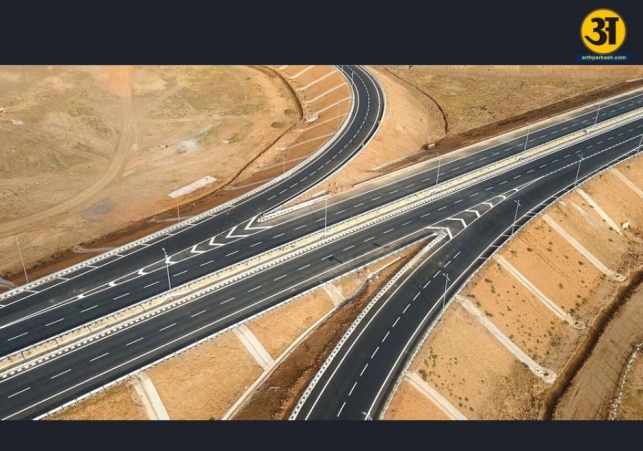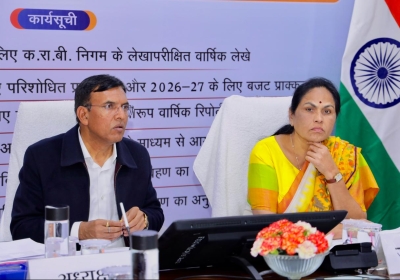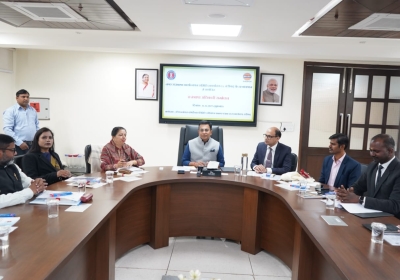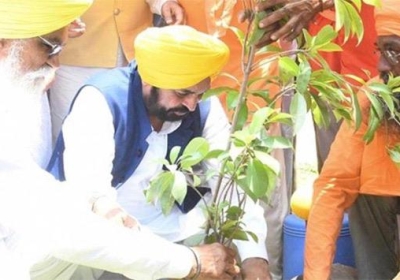
CM stresses need for north-south road corridor
Need to develop strong north-south corridor road network, says CM
On Tuesday, Uttar Pradesh Chief Minister Yogi Adityanath highlighted the urgent need for a strong North-South road corridor in the state. Speaking during a review meeting of the Public Works Department (PWD), the CM said that while many highways and expressways in Uttar Pradesh run from East to West, the state lacks a strong road network from North to South. He said a new road corridor connecting the northern border areas near Nepal to the southern districts of the state will greatly improve road connectivity.
He added that this corridor will link Uttar Pradesh with states like Madhya Pradesh, Maharashtra, Telangana, and Andhra Pradesh. The move will also boost business activities in the border districts and ensure that all regions in the state develop equally.
Yogi Adityanath stressed the importance of proper planning and asked officers to prepare a detailed roadmap. He said some of the roads would fall under the National Highway Authority of India (NHAI), and its help should be taken for construction there. For the rest of the routes, the state government would take responsibility to build, expand, and improve the roads.
He also spoke about the need for greenfield road projects—these are completely new roads built in areas where there were no roads before. According to him, new roadways must be planned wherever necessary to ensure smooth and easy travel across districts.
Support for industry and religious tourism
The CM further said that 33 major projects had been added to the state’s action plan to improve connections to industrial and logistics parks. These parks will be linked to both national and state highways, which will help in the faster movement of goods. It will make it easier for industries to do business and help the economy grow.
Besides industry, religious tourism has also been given special focus. CM Yogi said that the state government had started special road projects to improve access to famous religious places in the state. This includes places that see more than five lakh pilgrims each year. In total, 272 roads connecting these spiritual locations will be widened and improved.
These road projects have been selected in a way that will not require a lot of land acquisition, which usually delays construction. The government wants to ensure that these road works are completed as quickly as possible.
The chief minister also mentioned the need to give priority to urban road infrastructure. In cities and towns with populations over one lakh, special attention should be given to building bypass roads, ring roads, and flyovers. This is especially important as traffic jams are becoming common in urban areas.
He said that smooth traffic movement is a priority, and city residents must be relieved from the stress of long traffic jams. Therefore, construction works that support better traffic management must be fast-tracked.
The CM also instructed that all raw materials used for construction should be purchased from suppliers and units based in Uttar Pradesh. At the same time, the materials must meet all quality standards. This would not only support local businesses but also make sure that the roads are durable and safe.
While preparing the annual action plan for the new road corridor, the CM advised the officials to ensure that every district and every legislative assembly area is taken into account. Development must reach every corner of the state, and there should be no imbalance, he said.
Before starting any project, the CM said the team must carefully study the project’s usefulness, how it may affect the people in the area, and whether it is truly needed. This is important to avoid wastage of money and to make sure the projects serve the public properly.
ALSO READ: UP intensifies mega security drill across all 75 districts
ALSO READ: Allahabad High Court asks for details after Uttar Pradesh says 82 bridges are unsafe
He also emphasized road safety as a top concern. The CM instructed the transport, police, and PWD departments to work together. He said that speed breakers should be built using the table-top design, which is safer for vehicles. He also directed the installation of proper road signs and CCTV cameras on all major routes.
Additionally, he said all state roads should be widened by at least 10 metres so that vehicles can move smoothly and accidents are reduced. Better road width also allows for emergency vehicles to reach their destination faster.
Speaking about rural areas, the CM said that villages should not be left behind. He instructed that roads should be built and maintained properly in villages too. The funds available with gram panchayats, kshetra panchayats, and district panchayats should be used effectively for this purpose.
On bridge construction, CM Yogi shared details of several big projects underway in major cities. He said that in Prayagraj, a new bridge is being built to connect Salori with Jhunsi on the Ganga River. Another bridge will be built parallel to the existing Naini Bridge. Similarly, a new rail-cum-road bridge will be constructed downstream of the Malviya Setu in Varanasi. These projects are expected to ease traffic and improve transport in key areas.
He also mentioned that support from the Central Government will be taken wherever necessary. Officers must coordinate with central agencies for speedy approvals and funding if needed.
The CM stressed that regular monitoring of all construction projects is a must. If any officer or department is found to be negligent, strict responsibility should be fixed. There should be no compromise on quality or technical standards. All works must be done transparently, and progress should be reviewed regularly.
The goal, he said, is to ensure that Uttar Pradesh becomes a state with the best road infrastructure in the country. Strong roads are not only essential for business but also for safety, tourism, and rural development. The CM concluded by saying that the new road projects will transform the state's connectivity, open new economic opportunities, and improve the lives of people in both rural and urban areas.





